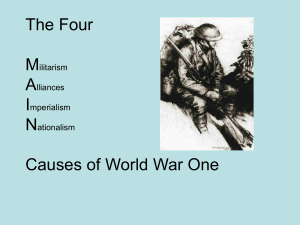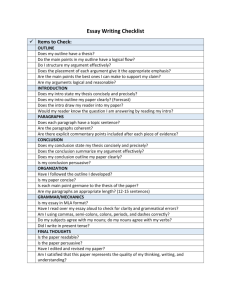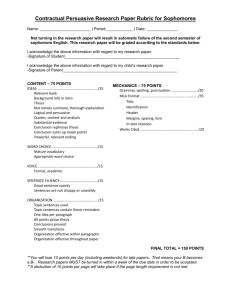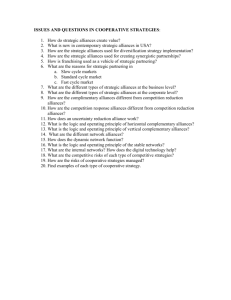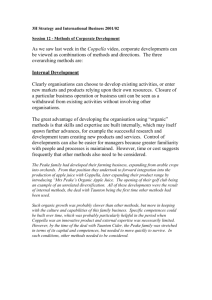Lesson Plans for Causes of World War I
advertisement
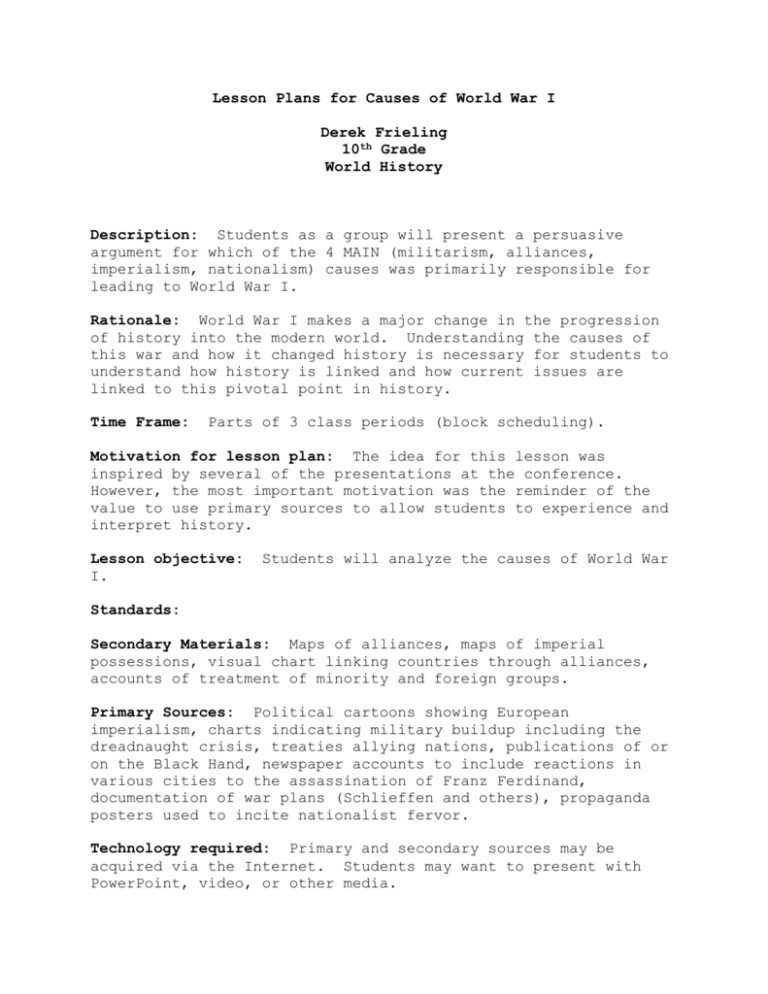
Lesson Plans for Causes of World War I Derek Frieling 10th Grade World History Description: Students as a group will present a persuasive argument for which of the 4 MAIN (militarism, alliances, imperialism, nationalism) causes was primarily responsible for leading to World War I. Rationale: World War I makes a major change in the progression of history into the modern world. Understanding the causes of this war and how it changed history is necessary for students to understand how history is linked and how current issues are linked to this pivotal point in history. Time Frame: Parts of 3 class periods (block scheduling). Motivation for lesson plan: The idea for this lesson was inspired by several of the presentations at the conference. However, the most important motivation was the reminder of the value to use primary sources to allow students to experience and interpret history. Lesson objective: I. Students will analyze the causes of World War Standards: Secondary Materials: Maps of alliances, maps of imperial possessions, visual chart linking countries through alliances, accounts of treatment of minority and foreign groups. Primary Sources: Political cartoons showing European imperialism, charts indicating military buildup including the dreadnaught crisis, treaties allying nations, publications of or on the Black Hand, newspaper accounts to include reactions in various cities to the assassination of Franz Ferdinand, documentation of war plans (Schlieffen and others), propaganda posters used to incite nationalist fervor. Technology required: Primary and secondary sources may be acquired via the Internet. Students may want to present with PowerPoint, video, or other media. Description: This assignment will be a problem based learning project. That is the students will be given the assignment and materials first and then I will teach the lessons and the students will then make their presentation. Students will be divided into groups of three. Student groups will be asked to determine which of the MAIN (militarism, alliances, imperialism, or nationalism) was primarily responsible for leading to World War I. The student groups will then develop a presentation for the purpose to persuade others that the cause they choose was the most significant in the development of the war. Students will then be provided copies of documents and research materials to use as evidence to support their argument. These materials include: maps of alliances, maps of imperial possessions, visual chart linking countries through alliances, accounts of treatment of minority and foreign groups, political cartoons showing European imperialism, charts indicating military buildup including the dreadnaught crisis, treaties allying nations, publications of or on the Black Hand, newspaper accounts to include reactions in various cities to the assassination of Franz Ferdinand, documentation of war plans (Schlieffen and others), and propaganda posters used to incite nationalist fervor. Once students have familiarized themselves with the materials, I will begin teaching the first phases of World War I. An open discussion will follow examining who should have been blamed for starting World War I. The lesson will conclude with student groups presenting their thesis on what was the most important MAIN cause of World War I. In addition to presenting their theory in class, each group will be required to turn in a written document summarizing their findings. The paper and presentation much include three arguments to support their thesis and be supported with evidence supplied and additional group research. Also, each paper must provide an argument to dispel each of the other three theories and the groups must be prepared to defend their thesis from these sources in their presentation. Scoring Guide for World War I Causes Assignment: Prepare a persuasive argument and paper for the primary cause of World War I. _________ Evaluation Checklist: Points Points Possible Received Solid thesis in the presentation supported by factual information from primary and secondary sources 25 Solid thesis in the paper supported by factual information from primary and secondary sources 25 Presentation is effective and persuasive 25 Paper is effective and persuasive 25 Adequate defense from opposing 3 causes in presentation 10 Adequate defense from opposing 3 causes in paper 10 Participation in group discussion 10 Effective participation within the group 20 Total Points Possible: Total Points 150 Received:

